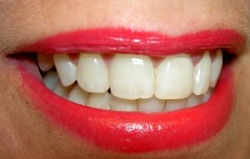
Having and maintaining good dental hygiene is important. One can use numerous ways to achieve this goal but among the most common approaches are brushing and flossing. For most folks, brushing can be done in a breeze; you just have to put toothpaste on your toothbrush, do a few up and down strokes, and then gargle. It doesn't actually matter whether you are doing it right or not, since you can still get clean teeth as well as minty fresh breath even if you don't follow the standard procedures in brushing your teeth.
On the contrary, a lot of people tend to skip the flossing part because they think it is just a meticulous process. According to health studies, about 90% of individuals do not actually do flossing. Many neglect the fact that every space between the teeth must be given proper attention just like the others and that there are food leftovers and bacteria by-products lurking in the gum line. Some persons may experience bleeding of gums when flossing, but then again, this procedure enables you to reach areas in the mouth that brushing does not. Keep in mind that there are lots of benefits one can get from flossing regularly, such as prevention of tooth decay, halitosis, tartar build-up, and gum disease. In addition, it can likewise lower down the risk of having heart disease and diabetes complications.
One of the pressing questions these days is what should go first. Should you brush then floss, or floss then brush? here is actually no definite answer to this query. In fact, it's very similar with the chicken-egg question and for the majority, this is an inconsequential query. The most imperative thing is to make these two part of an individual's regular activities.
In the debate whether flossing or brushing should go first, the house is actually divided. There are those who think that flossing must be the first since bacteria by-products and food leftovers usually leave an awful smell. One can do away with this by brushing afterwards.
On the other hand, there are people who advocate brushing first before flossing. Fluoride found in toothpastes works as a plaque remover and teeth remineralizer. While brushing does not reach all the spots in your mouth, flossing does. Therefore, flossing is not only employed to remove food debris stuck in between your teeth, it also helps in the proper distribution of fluoride in areas that your toothbrush is not able to reach.
On the contrary, a lot of people tend to skip the flossing part because they think it is just a meticulous process. According to health studies, about 90% of individuals do not actually do flossing. Many neglect the fact that every space between the teeth must be given proper attention just like the others and that there are food leftovers and bacteria by-products lurking in the gum line. Some persons may experience bleeding of gums when flossing, but then again, this procedure enables you to reach areas in the mouth that brushing does not. Keep in mind that there are lots of benefits one can get from flossing regularly, such as prevention of tooth decay, halitosis, tartar build-up, and gum disease. In addition, it can likewise lower down the risk of having heart disease and diabetes complications.
One of the pressing questions these days is what should go first. Should you brush then floss, or floss then brush? here is actually no definite answer to this query. In fact, it's very similar with the chicken-egg question and for the majority, this is an inconsequential query. The most imperative thing is to make these two part of an individual's regular activities.
In the debate whether flossing or brushing should go first, the house is actually divided. There are those who think that flossing must be the first since bacteria by-products and food leftovers usually leave an awful smell. One can do away with this by brushing afterwards.
On the other hand, there are people who advocate brushing first before flossing. Fluoride found in toothpastes works as a plaque remover and teeth remineralizer. While brushing does not reach all the spots in your mouth, flossing does. Therefore, flossing is not only employed to remove food debris stuck in between your teeth, it also helps in the proper distribution of fluoride in areas that your toothbrush is not able to reach.
 RSS Feed
RSS Feed